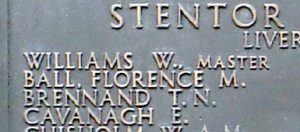Beddgelert is an ancient village and community in Snowdonia, in the ancient county of Caernarvonshire. It is reputed to be named after the legendary hound Gelert. Part of the community sits within the boundary of the county of Merionethshire, so I have taken the liberty of adding it to this section of the website. The men of the community who fell during both World Wars are commemorated on the Beddgelert War Memorial, which is located in a memorial garden next to the river, and alongside the A4085 road. The memorial takes the form of a pillar, topped by a wheeled cross, and is made of red granite.
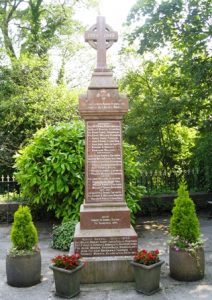
The Boer War, 1899-1902
Robert David Jones, Private, 19th Royal Hussars (Queen Alexandra’s Own). Robert was the son of Robert and Margaret Jones, of Caedu, Beddgelert. He enlisted into the 19th Hussars as a young man, and was in Ladysmith, South Africa with the regiment when the war broke out. The regiment got caught up in the siege of Ladysmith from 2 November 1899 until 27 February 1900, taking part in several engagements against the Boers during this period whilst helping hold the invading Boer army. Robert’s health had suffered during the siege, and soon after the Relief of Ladysmith he was sent home. He died at sea of enteric fever at some time into the voyage, and was buried at sea. His parents received news of his death in May 1900, from a letter written to a family friend, a Policeman at Aberystwyth, who informed the local Policeman at Beddgelert of the news.
The Great War, 1914-1918
Owen Davies, Private, 59941, Welsh Regiment. Owen was born on 6 February 1886, the son of William and Ellen Davies, of Peniel Terrace, Nantmor, Beddgelert. He worked as a coal miner at Aberfan prior to enlisting into the 3rd Battalion, Welsh Regiment on 19 February 1916, and was placed on the Army Reserve. On 26 May 1917 Owen was mobilised and travelled to Cardiff to join the 3rd Welsh. On 22 October 1917 he embarked for Egypt, joining the Infantry Base Depot before being posted to the 24th Battalion, Welsh Regiment. The battalion had been formed in March 1917 following the merger of the Pembroke and Glamorgan Yeomanry regiments, and was attached to the newly formed 231 Brigade, 74th (Yeomanry) Division. Owen joined the battalion in Palestine just after it had taken part in the Third Battle of Gaza in November, but arrived in time to take part in the capture of Jerusalem in December 1917. The Division then took part in the advance further north during the coming months. Due to the terrible casualties suffered by the British on the Western Front in March and April 1918 the Division was recalled to the Western Front, and arrived at Marseilles during May 1918. The Division took over a section of the line in Flanders, between the La Bassée Canal and the River Lys. Following the launching of the great offensive on the Somme on 21 August, the 74th Division was transferred south to take part in the advance towards the Hindenburg Line, and suffered heavy losses during the Battle of Épehy, especially during the fighting around Gillemont Farm. The Division was then moved back to Flanders, and took part in the final advance in Artois, pushing through northern France towards the Belgian frontier. By 19 October the 24th Welsh had reached Camphin, moving into billets at Lamain on the following day. Over the coming days few casualties were suffered, with the Germans now having lost their fighting spirit. Owen was unfortunately among three men killed near the village of Orcq on 6 November 1918, just five days away from the Armistice. The 33-year-old is buried in Orcq Communal Cemetery, Belgium.
Joseph Ellis, Private, 16017, The King’s (Liverpool Regiment). Joseph was the son of Robert and Maggie Mary Ellis, of Glasfryn, Rhyd-Ddu. Following the death of his father in 1904, his mother remarried, to David Roberts, and Joseph went to work at Liverpool. Joseph enlisted at Liverpool into the King’s (Liverpool Regiment) soon after the outbreak of war and embarked for France with the 17th Battalion, King’s (Liverpool Regiment) on 7 November 1915. The battalion was attached to 89 Brigade, 30th Division and moved to the Somme sector soon after arrival. The Division fought throughout the Somme offensive the following summer, and during 1917 fought at the Battle of Arras and at the Third Battle of Ypres. Joseph had been wounded at least once during the war, as he changed battalions four times, joining the 12th, the 13th, re-joining the 17th and later the 2/8th Battalion, with which he ended the war. He was demobilised after the Armistice, returning to Liverpool, where he died on 14 August 1920, aged 25. Joseph was buried in a war grave, beside his father, in Beddgelert New Cemetery. He is not commemorated on the Beddgelert memorial.
John Robert Evans, Private, 159691, Machine Gun Corps. John was the son of George Evans, of Llewellyn Cottage, Beddgelert. He was raised by his grandparents before becoming a postman at Beddgelert and Nantmor, and lived at 4, Sygun Terrace. John enlisted into the Royal Army Veterinary Corps, but at some time was transferred to the 200th Company, Machine Gun Corps. The Company had formed at Grantham, attached to the 59th Division. The Company did not move with the Division to France when it embarked in February 1917, but joined it some two months later. The Division had been following the German withdrawal to the Hindenburg Line, and moved to Ypres later that year, taking part in the Battle of the Menin Road and the Battle of Polygon Wood. In November the Division moved south, and took part in the Battle of Cambrai. It was still in the area when the Germans launched their Offensive of 21 March 1918 and was caught up in the desperate fighting over the coming days before being moved to Flanders to rebuild. The Division was then caught up in more heavy fighting when the Germans launched the second phase of their offensive, on the Lys, on 9 April, and suffered terrible casualties before the remnants of the Division were reduced to training cadres. The Division did not take over a section of the front again until 25 July 1918, and from 21 August took part in the great offensive, which was launched along the Somme front, advancing in the Arras sector, near Ablainzeville. The Division then moved back north, and took part in the Advance in Flanders, reaching Lille by 16 October. On 22 October 1918 John’s Company crossed the River Schelde, but some 300 yards away from the far bank, came into contact with the Germans, suffering a number of casualties. John was killed in action during the fighting which followed that day. The 30-year-old has no known grave and is commemorated on the Ploegsteert Memorial, Belgium.
Griffith Griffith, Private, 203628, Royal Welsh Fusiliers. Griffith was the son of Thomas and Mary Griffith of Maesboriau, Beddgelert. He worked as a farm servant prior to the war. Griffith enlisted into the 4th Battalion, Royal Welsh Fusiliers at Porthmadog on 18 February 1916 and was placed on the Army Reserve. He was mobilised on 20 January 1917, and was posted from Wrexham to Park Hall, Oswestry for training. Park Hall was a large camp used by many battalions of the Reserve Welsh Division for training troops before being sent to the front. Griffith had been at Park Hall for less than a month before he became ill, and was taken to Oswestry Military Hospital, where he died of pneumonia on 26 February 1917, aged 22. His remains were brought home for burial in Beddgelert New Cemetery.
Thomas Griffiths, Private, 36103, South Wales Borderers. Thomas was the son of Morris and Ann Griffiths, of Gwynant Street, Beddgelert. He worked as a stone mason prior to the war and lived with his half-brother, William Roberts, at Gwynant Street. Thomas enlisted into the South Wales Borderers and was posted to their 14th (Reserve) Battalion. Thomas had served overseas at some time, before being medically downgraded, and transferred to the 419th Agricultural Company, Labour Corps. He became ill, and died at Ty’n Bont, Capel Curig on 16 November 1918, aged 30, just three days after the Armistice. His remains were brought home for burial in Beddgelert New Cemetery. Thomas is not commemorated on the Beddgelert memorial.
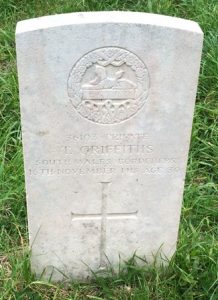
Griffith Hughes, Able Seaman, R/4638, Royal Naval Volunteer Reserve. Griffith was born on 22 January 1893, the son of Griffith and Ann Hughes of Tanybryn, Rhyd-ddu. He worked as a slate dresser prior to the war. Griffith enlisted into the army on 10 December 1915 and was placed on the Army Reserve. He was mobilised on 3 July 1917, and was posted to the Royal Naval Volunteer Reserve, training as a soldier, before being drafted to France on 30 October 1917, to join Anson Battalion, 63rd (Royal Naval) Division. The Royal Naval Division had been formed at the outbreak of war, due to a surplus of Royal Naval Reservists, so it was decided to form them into infantry. The Division had taken part in the defence of Antwerp at the outbreak of war, and in 1915 took part in the Gallipoli campaign. It moved back to France in May 1916, taking part in the Battle of the Somme, and the following year took part in the Battle of Arras. The Division then moved to the Ypres Salient, taking part in the Second Battle of Passchendaele, before being transferred to the Cambrai sector, to take part in the Cambrai offensive. Anson Battalion actually entrained on 10 December 1917 and the battalion detrained at Achiet-le-Grand that afternoon, before marching to camp at Beaulencourt. The entire Division then began its move towards the battle area, moving via Rocquigny and Etricourt to Metz over the coming days. The Division then took over a section of the line on 22 December, around Villers Plouich. On 30 December 1917 Anson Battalion was in reserve, working behind the line, when the battalion received an SOS from the front line, with news that the Germans had launched a massive counter-attack. Anson battalion was then moved forward and launched a fierce counter-attack against the Germans. Griffith was killed during the resulting fight that day. The 24-year-old has no known grave and is commemorated on the Thiepval Memorial, France.
John James Jones, Sapper, 216769, Royal Engineers. John was the son of John and Susannah Jones, of Talybont, Cardiganshire. He married Annie Roberts in 1902, and resided with his wife at 15, Gwynaw Street, Beddgelert. John enlisted at Bangor on 1 December 1916 into the Royal Engineers, and worked as a bricklayer for the Royal Engineers in Britain until being posted to France on 13 May 1918, joining the 205th Field Company, Royal Engineers, which was attached to the 35th Division. The division had just moved to Ypres to rebuild, after seeing heavy fighting on the Somme, and remained in the Ypres Salient until taking part in the great offensive in August 1918. On 20 October 1918 the Division launched another of what had been a series of offensives which had taken place over the weeks since the launch of the offensive, its objectives being canal crossings around the town of Sweveghem. John’s Company was following behind the attacking infantry battalions, with orders to bridge the canal. John was killed in action during the fighting that day. The 38-year-old is buried in Harlebeke New British Cemetery, Belgium.
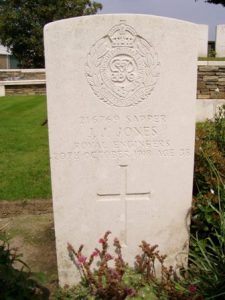
Frederick Marshall, Battery Serjeant Major, 49507, Royal Field Artillery. Frederick was the husband of Frances Mary Marshall of 10, Sygun Terrace, Beddgelert. He was a regular soldier for many years prior to the war, and had served in India and in South Africa during the Boer War with the Royal Field Artillery, before retiring. By 1911 he was living with his wife, Frances Mary, at 10, Sygun Terrace, Beddgelert. Frederick briefly became Recruiting Officer at Beddgelert following the outbreak of war, before quickly being offered a role as an instructor at Aldershot, joining the 224th Battery, Royal Field Artillery. Sadly, he became ill and died of pneumonia at Cambridge Military Hospital, Aldershot on 1 December 1914, aged 50. He was buried in Aldershot Military Cemetery, Hampshire.
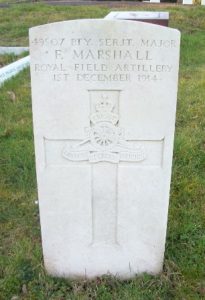
Harry Owen, Private, 241432, Royal Welsh Fusiliers. Harry was born in Nant Gwynant, near Beddgelert, in 1893, the son of Griffith and Anne Owen. Prior to the war the family had moved to Frongaled, Dolgellau. Harry lived at St. Asaph prior to the war and enlisted at Rhyl into the 5th Battalion, Royal Welsh Fusiliers. He was posted to the reserve battalion at Bedford, and in July 1916 embarked for Egypt, joining the 1/5th Battalion, Royal Welsh Fusiliers, which was attached to 158 Brigade, 53rd (Welsh) Division. The Division had been evacuated from Gallipoli in December 1915, moving to Egypt to join the EEF, and helped guard the Suez Canal before taking part in operations to drive the Turks out of the Sinai. The EEF then turned its attention onto driving the Turks out of Palestine, and on 26 March 1917 launched its first offensive against the coastal city of Gaza, which guarded the road to Jerusalem. Initial gains during the day were lost when the assaulting divisions lost touch with each other and communication broke down when a thick fog cloaked the battlefield. Harry was killed in action during the desperate fighting that day. The 23-year-old is buried in Gaza War Cemetery, Palestine.
Henry Jones Owen, Private, 266510, Royal Welsh Fusiliers. Henry was the son of Robert and Anne Owen of Snowdon View, Nant Gwynant. He worked as a farm servant at Dolwgan Isaf Garn, Dolbenmaen prior to the war. Henry enlisted into the 3/6th Battalion, Royal Welsh Fusiliers at Porthmadog on 11 December 1915 and was initially placed on the Army Reserve, before being mobilised on 7 March 1916. He joined up with the battalion at Park Hall, Oswestry, and after completing his training, embarked for Egypt on 19 October 1916, and upon landing in Alexandria was posted to the 1/6th Battalion, Royal Welsh Fusiliers, which was attached to 158 Brigade, 53rd (Welsh) Division. The Division had been evacuated from Gallipoli in December 1915, moving to Egypt to join the EEF, and helped guard the Suez Canal before taking part in operations to drive the Turks out of the Sinai. The EEF then turned its attention onto driving the Turks out of Palestine, and on 26 March 1917 launched its first offensive against the coastal city of Gaza, which guarded the road to Jerusalem. Initial gains during the day were lost when the assaulting divisions lost touch with each other and communication broke down when a thick fog cloaked the battlefield. Henry was killed in action at some time during the fighting that day. The 24-year-old is buried in Gaza War Cemetery, Gaza.
Albert Llewelyn Parry, Private, 241405, The King’s (Liverpool Regiment). Albert was born at Everton on 27 September 1896, the son of William John Parry and Catherine Ellen Parry (nee Jones). His father was from Rhyd-Ddu, Beddgelert, and Albert was a regular visitor to his grandparents. Albert worked as a Clerk at the Corn Exchange in Liverpool prior to the war. He enlisted into the King’s Liverpool Regiment in May 1915 and embarked for France on 24 December 1915, joining the 6th Battalion, King’s (Liverpool Regiment), which was attached to 15 Brigade, 5th Division. A month later the battalion transferred to 165 Brigade, 55th (West Lancs) Division. The Division relieved the French 88th Division south of Arras in January, and remained there until being relieved by the 11th (Northern) Division on 25 July, when it moved south to the Somme. The Division took up positions in the front line opposite the village of Guillemont, taking part in the Battle of Guillemont and the Battle of Ginchy. There was a short period of rest at Ribemont from 12 to 17 September, and then the Division fought at the Battle of Flers-Courcelette and the Battle of Morval. Relieved by the 41st Division on 28 September, the Division withdrew, before relieving the 29th Division at Ypres in October 1916 and took over the Railway wood sector. For much of February 1917 Albert’s battalion was resting at O Camp, near Brandhoek, but by 18 February had moved back into support trenches at Ecole, Ypres, behind the front line at Railway Wood. On 1 March the Royal Engineers blew three underground mines beneath the German positions facing Railway Wood, and the 6th King’s sent out a fighting patrol to cut the enemy wire using Bangalore Torpedoes. On the following day the battalion took over the front line, and on 4 March the Germans retaliated, blowing a mine and opening up an artillery barrage on the battalion’s positions. Albert was killed during the barrage that evening. The remains of the 20-year-old were carried back by his comrades and buried in Vlamertinghe Military Cemetery, Belgium. Albert is not commemorated on the Beddgelert memorial.
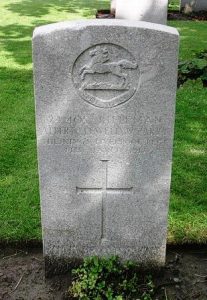
David Griffith Pierce, Lance Sergeant, 31701, South Lancashire Regiment. David was the son of Robert and Janet Pierce of Sygun View, Beddgelert. He worked as a farm labourer prior to the war. David enlisted at Porthmadog into the 22nd (Reserve) Battalion, Royal Welsh Fusiliers on 11 February 1916 and was posted to Kinmel Park for training. On 23 September 1916 David embarked for France at Southampton, and was posted to the 6th Infantry Base Depot at Rouen. On 1 October David was posted to the 7th Battalion, South Lancashire Regiment, which was at Outtersteene attached to 56 Brigade, 19th (Western) Division. The Division was resting and rebuilding following heavy fighting during the early battles of the Somme offensive. The Division then began to move back towards the Somme sector, reaching Doullens on 5 October, before taking over positions at St. Leger. The Division then moved to Coigneux to train and prepare to return to the Somme sector, to take part in the battle which was still raging there. The Division then moved via Contay to Albert, before returning into the Somme front line by 22 October and took over positions near Stuff Redoubt. On 7 November 1916 David’s battalion moved into the line at Schwaben Trench. David was killed in action at some time during the day. The 20-year-old has no known grave and is commemorated on the Thiepval Memorial, France.
Owen Roberts, Lance Corporal, 580, Australian Infantry. Owen was the son of Edward and Jane Roberts of Penybryn, Nant Gwynant. He worked as a farm labourer prior to emigrating to Australia prior top the war, then gained work as a farm labourer near Melbourne. Owen enlisted into the Australian Imperial Force at Melbourne on 19 February 1916 and was posted to the 39th Battalion, Australian Infantry. He embarked at Melbourne aboard HMAT Ascanius on 27 May 1916 and disembarked at Devonport on 18 July. He moved to Larkhill with the battalion for further training and then on 23 November the battalion embarked at Southampton for France, attached to the 10th Brigade, 3rd Australian Division. The battalion saw its first major battle at Messines Ridge between 7-9 June 1917. It then took part in the Battle of Broodeseinde on 4 October, and then at the Battle of Passchendaele on 12 October. After wintering in Belgium, the 3rd Division was rushed south to France following the launching of the German spring offensive, and played an important role in stopping the German drive towards Amiens. The Division then took part in the Battle of Amiens on 8 August 1918, in an action which broke German spirit, and when the Allies launched their great offensive on 21 August the Australians helped drive towards the Hindenburg Line, advancing along the Somme Valley. Owen was badly wounded during heavy fighting on 25 August, and was evacuated to the 12th General Hospital at Rouen, where he died of his wounds on 21 September 1918, aged 33. He is buried in St. Sever Cemetery Extension, Rouen, France. His brother, William Edward Roberts, had died whilst training in 1917.
Rhys Roberts, Private, 15563, The King’s (Liverpool Regiment). Rhys was the son of William and Elizabeth Roberts, of Bwlch, Nant Gwynant. He worked in Liverpool for several years prior to the war, and married Edith Mary Griffith, whose family hailed from Anglesey, in 1915, after having enlisted into the King’s (Liverpool Regiment). He was posted to the 17th Battalion, King’s Liverpool Regiment, which had been raised in Liverpool by Lord Derby, before moving to Belton Park, Grantham to join 89 Brigade, 30th Division. On 7 November 1915 Rhys landed in France with the battalion, and the entire Division moved to the Somme sector. The 17th King’s moved via billets at Vignacourt to billets at Beaumetz, before starting work behind the lines at Engelbelmer, Mesnil and Hamel towards the end of December. The Division then moved to the southern part of the Somme sector, taking over positions at Maricourt. At 02.00 on 14 January 1916 Rhys was in the line with the battalion in the Maricourt Sector, when a rifle grenade accidentally exploded, killing him, Private Brownlee and Private Harvey. The remains of the three men were carried back behind the line by their comrades and buried in Maricourt Military Cemetery, side by side. After the war the burials in Maricourt were exhumed, and re-buried in Cerisy-Gailly Military Cemetery, France, where Rhys still lies.
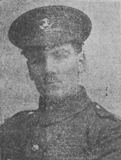
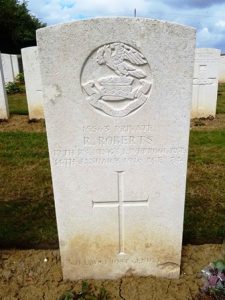
Richard Henry Roberts, Private, 67649, Cheshire Regiment. Richard was the son of Richard and Gaynor Roberts, of Garn View, Rhyd-ddu. He enlisted into the army late in the war, and had served in France with the 9th Battalion, Cheshire Regiment, which was attached to 56 Brigade, 19th (Western) Division. There are no surviving records to show when Richard arrived in France, but he would most likely have been among a number of reinforcements to join the battalion after its mauling following the launching of the German Spring offensives in 1918. The Division suffered terrible casualties during the three phases of the offensive, and after rebuilding took part in the great advance towards the Hindenburg Line from 21 August 1918. Towards the end of the war Richard’s health broke down, as he was found to have contracted tuberculosis. He was brought back to England for treatment at Fulham Military Hospital, but died there of tuberculosis on 1 January 1919, aged 19. His remains were brought home for burial in Beddgelert New Cemetery.
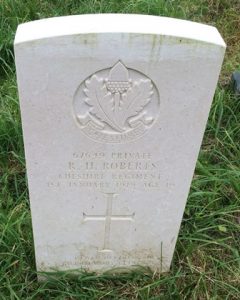
Richard Humphrey Roberts, Private, 25938, Royal Welsh Fusiliers. Richard was the son of Richard and Ellen Roberts, of 6 Gwynant Street, Beddgelert. He worked as a farm labourer prior to the war. Richard enlisted at Beddgelert into the 17th Battalion, Royal Welsh Fusiliers on 19 April 1915. The battalion was raised at Llandudno, joining the 43rd (Welsh) Division and trained in North Wales before moving to Winchester in the summer of 1915, where the battalion joined the re-numbered 115 Brigade, 38th (Welsh) Division. The Division moved to France on 2 December 1915 and moved to the Nursery Sector near Fleurbaix for trench initiation alongside the Guards Division. The Division then held a sector of the line near Cuinchy before marching south to the Somme sector in June 1916 to take part in the assault on Mametz Wood. The first attack on the wood was launched on a two-battalion front on 7 July, but failed, and the Divisional Commander, Sir Ivor Philipps, was replaced before the Division attacked again on a two Brigade front on 10 July 1916. After two days of ferocious hand-to-hand fighting, the wood was cleared up to its northern edge, before the battered Division was relieved and took over a section of the front at Hébuterne. On 26 July the 17th RWF relieved the 16th Welsh in the Hébuterne trenches, to begin a short tour. On the following day, 27 July 1916, the battalion sent out working parties to repair the wire defences, and suffered the loss of Richard and two other men killed in the process of wiring. Richard was 20 years old when he was killed that day and is buried in Euston Road Cemetery, Colincamps, France.
William Roberts, Private, 12513, Royal Welsh Fusiliers. William was the son of William and Ann Roberts, of Penygaer, Nantmor. He enlisted at Beddgelert into the 8th Battalion, Royal Welsh Fusiliers soon after the outbreak of war. The battalion was formed at Wrexham, before moving to Salisbury Plain to join 40 Brigade, 13th (Western) Division. In July 1915 the entire Division embarked for Mudros, and from 16 July began landing at Cape Helles, Gallipoli, relieving the 29th Division. The Division returned to Mudros at the end of the month, before being transferred to ANZAC Cove between 3 and 5 August 1915, and took part in the Battles of Sari Bair, Russell’s Top, and Hill 60. Soon afterwards the Division was transferred from ANZAC to Suvla Bay, and was evacuated from Suvla on 19 December 1915, transferring to the Helles bridgehead, where the Division faced the last Turkish attacks at Helles. On 8 January 1916, the Division was evacuated from Helles, and by 31 January was concentrated at Port Said, holding posts in the Suez Canal defences. On 12 February 1916 the Division began to move to Mesopotamia, to strengthen the force being assembled for the relief of the besieged garrison at Kut al Amara. By 27 March, the Division had assembled near Sheikh Saad and came under orders of the Tigris Corps, and then took part in the attempts to relieve Kut. William was killed in action soon afterwards, on 5 April 1916, aged 26. He has no known grave and is commemorated on the Basra Memorial, Iraq.
William Edward Roberts, Private, 203754, Royal Welsh Fusiliers. William was the son of Edward and Jane Roberts, of Penybryn, Nant Gwynant. He enlisted at Porthmadog into the 4th (Reserve) Battalion, Royal Welsh Fusiliers, and was posted to Park Hall Camp, Oswestry for training. William had not been at Oswestry long before he took ill, and he died of bronchial pneumonia at Park Hall Hospital on 19 February 1917, aged 24. His remains were brought home for burial in Beddgelert New Cemetery. His brother, Owen, died of wounds in France in 1918.
William Ferris Rudd, Captain, Royal Welsh Fusiliers. William was born in 1887 in Kirkwhelpington, Northumberland, the son of George Patrick Ferris Rudd and Isabella Rudd nee Benson. William’s mother died in 1894 and his father remarried the following year, moving the family to Plastangraig, Beddgelert by 1898. William was educated at Denstone College, Staffordshire before joining the Mercantile Marine, and had risen through the ranks to become a Ship’s Captain prior to the war. On 6 February 1915 William was commissioned into the 12th Battalion, Royal Welsh Fusiliers, and joined the 10th Battalion, Royal Welsh Fusiliers at Noeux-les-Mines in France on 31 August 1916. The battalion was attached to 76 Brigade, 3rd Division and had just moved there to rebuild following its efforts on the Somme, where it had seen severe fighting at Longueval and in Delville Wood. The Division then took over a sector of the front at Loos over the coming weeks, before returning to the Somme by 8 October, and prepared to take part in further offensives, north of the River Ancre. A large-scale offensive had been planned here, the Battle of the Ancre, and the 3rd Division was to play a major part in the assault. The 10th RWF was one of the two assaulting battalion of 76 Brigade, 3rd Division and attacked alongside the 1st Gordon Highlanders, with the 3rd King’s Own in support. The men were given hot tea, a swig of rum and a cheese sandwich before taking up their starting positions at John Copse. At 5.45 am on 13 November 1916 the 10th RWF advanced through thick fog towards the north of Serre, meeting little opposition initially but, when the artillery barrage moved forward, the ground to the left of the battalion came alive with Germans who had been sheltering in deep dugouts who had begun to pour machine-gun fire into the assaulting troops. The situation soon turned into chaos; the second objective line was easily reached, but the battalion became fragmented, with a party of men, supported by a number of Gordon Highlanders taking the third line, and two platoons under Captain Rudd advancing further into the fourth line. This small group of men were soon surrounded by the Germans who wiped them out. William was among nine officers from the 10th RWF killed during the day, while 88 men had been killed. Captain Bishop and 156 men were missing, while three officers and 102 men were wounded. William was buried at Serre Road Cemetery, No. 1. He was originally commemorated on the Thiepval Memorial, as the location of his grave had been lost and the headstone on his grave at Serre Road was originally to an Unknown Captain of the Royal Welsh Fusiliers. This was rectified some years later and a new headstone was erected with his name. (Most of this write up was taken from Volume 2 of my book, Welsh at War).
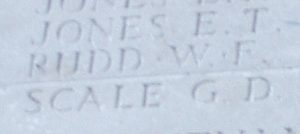
Willie Parry Thomas, Private, 78054, Royal Welsh Fusiliers. Willie was born in Llanrug in 1899, the son of Thomas William Thomas and Jane C Thomas. Soon after his birth the family moved to Aberfan, where Thomas had gained work as a Collier, but by 1911 the family was back in his mother’s native Beddgelert, living at Bryn Tirion, Nantmor. The family had moved again prior to the war, and lived at 1 Primrose Cottages, Bedlinog. Willie travelled to Cardiff to enlist into the army as soon as he turned 18, and was posted to France at some time in 1918, joining the 13th Battalion, Royal Welsh Fusiliers, which was attached to 113 Brigade, 38th (Welsh) Division. He most probably joined up with the battalion after the 38th Division had launched its offensive across the River Ancre on 21 August 1918. The Division captured the heights of Thiepval and Pozieres Ridge before advancing across the old Somme battlefields of 1916 towards the Hindenburg Line. Over the coming weeks the Division recaptured Delville Wood, Morval and Sailly-Saillisel, before reaching the Canal du Nord. Willie was wounded by German gas shell during the drive towards the Canal, and was evacuated to the base hospital at Rouen, where he died of his gas wounds on 30 September 1918, aged 19. He is buried in St Sever Cemetery Extension, Rouen, France.
Evan Watson, Gunner, 112362, Royal Garrison Artillery. Evan was the son of Walter and Margaret Watson, of Plasgwynant Farm, Nant Gwynant. He worked as a shepherd prior to the war. Evan enlisted at Porthmadog into the army on 1 March 1916 and was placed on the Army Reserve. Evan was mobilised on 26 July 1916 and was posted to the No 2 Depot, Royal Garrison Artillery. After completing his training, Evan embarked for France at Southampton on 10 January 1917, and was posted to the 241st Siege Battery, Royal Garrison Artillery. On 20 May 1917 Evan was badly wounded, suffering gunshot wounds to his side and chest. He was treated at the St John’s Ambulance Hospital at Étaples before being sent back to England aboard the Hospital Ship Peter de Conig. After recovering from his wounds, Evan was drafted back out to France on 8 June 1918, and was posted from the Base Depot at Étaples to the 119th Siege Battery, Royal Garrison Artillery. On 15 August 1918 Evan was in a bunker with a number of other men, when some 8” German shells which had been stored in the bunker ignited. Evan suffered terrible burns to his face, head, legs and hands and was evacuated to No. 3 Stationary Hospital at Rouen, where he died of his wounds on 21 August 1918, aged 30. He is buried in St. Sever Cemetery Extension, Rouen, France.
David John Williams, Private, 22897, The King’s (Liverpool Regiment). David was the son of David and Myfanwy Williams, of Plas Gwyn, Beddgelert. He worked as a warehouseman in Liverpool prior to the war. David enlisted at Liverpool into the King’s (Liverpool Regiment) on 9 November 1914 and was posted to the 20th Battalion, King’s (Liverpool Regiment). The battalion was raised in Liverpool by Lord Derby, moving to Tournament Hall, Knotty Ash and then to Knowsley Park, before moving to Belton Park, Grantham to join 89 Brigade, 30th Division in April 1915. On 7 November 1915 David landed in France with the battalion, and the entire Division moved to Amiens, in the Somme sector. The Division then moved to the area south-west of Arras, at Berles Au Bois, for training and by the first week of January 1916 took over a section of front near Maricourt, on the Somme. The Division remained in this sector over the coming months, its infantry battalions carrying out the usual routine of tours in the front line, interspersed with spells in reserve and support, whilst also carrying out training in preparation for the forthcoming Somme offensive. The Battle of the Somme opened at 07.20 on 1 July 1916, with a series of underground mines being blown beneath strategic places in the German front line. David’s battalion took part in the opening assault, towards Montauban, with each Brigade given specific objectives. David’s battalion captured its objective of the Briqueterie, which helped in the Divisions capture of the village of Montauban. Fighting raged over the coming days, and David was killed in action near Bernafay Wood on 3 July, the day before his battalion was relieved. The 19-year-old has no known grave and is commemorated on the Thiepval Memorial, France.
John Williams, Private, 2993, Australian Infantry. John was the son of John and Elizabeth Williams, of Glanydon, Nantmor, Beddgelert. He had emigrated to Australia prior to the war and worked as a gardener in Brisbane. On 4 January 1916 John enlisted at Brisbane into the 6th Reinforcements for the 31st Battalion, Australian Infantry. He embarked with the 6th Reinforcements aboard the SS Ceramic on 13 April 1916 and disembarked at Port Said on 16 May. The unit then sailed for Plymouth, and upon arrival, John joined the 8th Training Battalion. On 17 September 1916 John arrived in France and joined the 5th Australian Division Base Depot at Étaples and from there was posted out to join the 31st Battalion, Australian Infantry on 26 October. The Battalion was attached to the 8th Brigade, 5th Australian Division, and had just moved to the Somme sector, after rebuilding following heavy losses at Fromelles. The Division then took part in the advance which followed the German withdrawal to the Hindenburg Line the following year, then played a minor role in the Australian attack against the Hindenburg Line during the second battle of Bullecourt. The 5th Division then moved north and saw heavy fighting at the Third Battle of Ypres, during the attack on Polygon Wood on 26 September. Following the launching of the German Spring offensive on 21 March 1918, the Division was brought south to help stem the German advance on Amiens and saw heavy fighting over the coming weeks. On 25 May 1918 the 31st Battalion sent out a number of patrols at intervals throughout the day. John went out on a patrol led by Lieutenant Thompson, MC, which had been ordered to cut a gap in the enemy wire. The patrol was spotted by the Germans, who opened up heavy fire on the party, killing John and two other men, and forcing the survivors to withdraw. The bodies of two of the men were recovered and carried back for burial, but John’s body could not be recovered and lay in the middle of the German wire. The 23-year-old has no known grave, and is commemorated on the Villers-Bretonneux Memorial, Fouilloy, France.
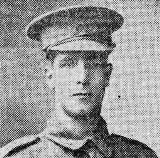
Robert David Williams, Private, 69252, Royal Welsh Fusiliers. Robert was the son of David and Annie Williams, of Beddgelert. He enlisted into the Royal Welsh Fusiliers, and after completing his training was posted to France, joining the 2nd Battalion, Royal Welsh Fusiliers, which was attached to 19 Brigade. The battalion had been in France since 11 August 1914, and had a very interesting and well documented war. Upon joining 19 Brigade, the Brigade became attached to the 6th Division on 12 October 1914, then to the 27th Division on 31 May 1915. On 19 August 1915 the Brigade joined the 2nd Division, and then three months later moved to the 33rd Division. The Division saw its first major action during the Battle of the Somme, from July 1916 onwards. It then fought at the Battle of the Scarpe and at Bullecourt, before heading to Ypres, and fought at the Menin Road and at Polygon Wood. The Division wintered at Ypres, taking turns in the front line on Passchendaele Ridge. On 4 January 1918 the 2nd RWF moved up from reserve at Brandhoek and relieved the 7th DLI in the Passchendaele trenches. Robert was wounded soon after this and died of his wounds on the following day, 5 January 1918, aged 22. He is buried in Tyne Cot Cemetery, Belgium. The cemetery lies on the ridge, so he must have died very soon after being wounded. Robert’s parents later moved to 14, Peckers Hill Road, Sutton, St. Helens, Lancs.

Rowland Williams, Private, 317032, Royal Welsh Fusiliers. Rowland was born at Beddgelert on 19 January 1880, the son of Richard and Elizabeth Williams. He married Ellen Roberts, of 2, Gwynant Street, Beddgelert, on 18 August 1910, and the couple had four children. Rowland worked as a Gardener prior to the war. He enlisted at Porthmadog into the Royal Welsh Fusiliers on 10 December 1915 and was initially placed on the Army Reserve, but was mobilised on 1 June 1916 and sent to Litherland Camp, Liverpool, to join the 3rd Battalion, Royal Welsh Fusiliers. On 30 March 1917 Rowland was posted to a Labour Company of the King’s (Liverpool Regiment), but on 25 April 1917 was transferred again, to the 23rd Battalion, Royal Welsh Fusiliers. He embarked for France on 21 December 1917, and was posted from the Infantry Base Depot to the 14th Battalion, Royal Welsh Fusiliers, which was at Armentieres attached to 113 Brigade, 38th (Welsh) Division. The infantry battalions of the Division were carrying out the normal routine of trench rotation in the Erquinghem-Lys sector. On 16 March the 14th RWF was in support, providing working parties to support work done by the Royal Engineers. Rowland was badly wounded on 16 March, suffering gunshot wounds to his right leg and arm, fracturing his tibia and fibula, and was evacuated to the 51st Casualty Clearing Station at Merville, where he died of his wounds two days later, on 18 March 1918, aged 38. Rowland is buried in Merville Communal Cemetery Extension, France.
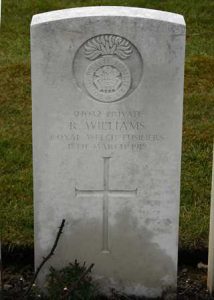
William Williams, Private, 203646, Royal Welsh Fusiliers. William was the son of William and Margaret Williams, of Hafod Owen, Nant Gwynant. He enlisted at Dolgellau into the 4th Reserve Battalion, Royal Welsh Fusiliers on 21 January 1917, and on 20 July 1917 was posted to the Infantry Base Depot in France. On 5 August 1917 he was posted to the 17th Battalion, Royal Welsh Fusiliers. The battalion was attached to the 38th (Welsh) Division, which had taken part in the assault on Pilckem Ridge on 31 July 1917, suffering heavy casualties in its successful advance to the Steenbeek. William was among a number of reinforcements posted to the battalion to help rebuild its numbers. William joined up with the 17th RWF at Seaton Camp, near Sainte-Sixte. On 9 September the battalion marched to Proven, and the entire 38th Division entrained, beginning its move from Ypres to new positions at Sailly-Sur-La-Lys, where it remained over the winter. The Germans launched their Spring Offensive on the Somme on 21 March 1918, and the 38th Division was sent south, to relieve the battered 2nd and 47th Divisions, and took up positions facing Thiepval Ridge. On 21 August the Division launched an attack across the flooded Ancre Valley and by the afternoon had captured Thiepval Ridge, before beginning its famous advance across the old Somme battlefields towards the Hindenburg Line. On 29 September the Hindenburg Line was broken, and the Allies began advancing past it towards the German frontier. William was seriously wounded during the Battle of Cambrai, as the Division was pushing towards Le Cateau, and died of his wounds at No 3 Casualty Clearing Station on 8 October 1918. The 20-year-old is buried in Rocquigny-Equancourt Road British Cemetery, Manancourt, France.
World War Two, 1939-1945
John Patrick Brennan, Private, 13017406, Pioneer Corps. John was born in Ireland in 1905, the son of James and Annie Brennan. He was the husband of Elizabeth Brennan of 1 Tanrhiw, Beddgelert. John served with the Pioneer Corps towards the end of the war. He died at Bangor on 3 December 1944, aged 38, and his remains were brought home for burial in Beddgelert New Cemetery.
Robert Henry Jones, Sergeant Major, 897965, Royal Artillery. Robert was the son of Robert and Eliza Harriet Jones, of Ferlas, Nantmor. He enlisted into the 69th (Denbighshire Yeomanry) Medium Regiment, Royal Artillery. The battery had been raised as a duplicate unit of the existing 61st Medium Regiment in 1939 and saw service in the Welsh Area, Western Command, before embarking for France to join the BEF. The battery was evacuated from Dunkirk in May 1940 and returned to England. Robert survived the withdrawal to Dunkirk, but died at Brighton during the Blitz five months later, on 8 September 1940, aged 25. His remains were conveyed home for burial in Ss Eleri and Mary Churchyard, Llanrhos.
Alun Morris, Gunner, 955789, Royal Artillery. Alun was the son of John and Mary Morris of Sygun Bach, Beddgelert. He enlisted into the Royal Artillery and was posted to the 149th (Lancashire Yeomanry) Regiment, Royal Artillery. The regiment was converted to a field regiment on 1 June 1940 and embarked for Egypt in March 1941. It was converted to the 149th Anti-Tank Regiment at Mena Camp soon after arrival, before being sent to Tobruk. The regiment then took part in the break-out from Tobruk during December 1941. Alun was killed soon afterwards, on 21 January 1942, aged 24. He is buried in Benghazi War Cemetery, Libya.
Thomas Edgar Morris, Fusilier, 4209140, Royal Fusiliers (City of London Regiment). Thomas was the son of Edward Edgar Morris, and of Maggie Morris, of Glanrafon, Rhyd-ddu. He enlisted into the army and was posted to the 8th Battalion, Royal Fusiliers, which was attached to 167th Infantry Brigade, 56th (London) Division. The Division arrived in North Africa in time to take part in the latter stages of the Tunisia Campaign, and then in September 1943 took part in the landings at Salerno, as part of the Allied invasion of Italy. The Division crossed the Volturno Line, before, in December, being held up at the Winter Line. The Division then fought in the Battle of Monte Cassino. Thomas was killed at Cassino on 16 February 1944, aged 22. He has no known grave and is commemorated on the Cassino Memorial, Italy.
Pyrs Owen Roberts, Sergeant, 2210829, Royal Air Force Volunteer Reserve. Pyrs was the son of William and Elizabeth Roberts of The Bungalow, Nant Gwynant. He enlisted into the Royal Air Force Volunteer Reserve and trained as a Gunner before being posted to 199 Squadron, RAF. The squadron had reformed at RAF Blyton on 7 November 1942 equipped with the Vickers Wellington, before moving to RAF Lakenheath where it was re-equipped with the Short Stirling heavy-bomber. Between February and June 1943, the squadron was based at RAF Ingham in Lincolnshire, training for maritime mine laying, then returned to RAF Lakenheath for marine operations over the English Channel and North Sea. The squadron then carried out mine-laying duties, whilst also carrying out drops for SOE operatives in occupied Europe, before being transferred to No. 100 (Radio Countermeasures) Group, tasked with radar jamming operations. On the night of 25 September 1944, Pyrs took off from RAF North Creake, aboard a Short Stirling III, Serial LJ518, on an operation to jam German radar over the North Sea. Whilst returning the following morning, 26 September 1944, the Stirling struck some trees whilst approaching the airfield through low cloud, and crashed some three miles from Saxthorpe, Norfolk, bursting into flames and killing all her crew of seven. Pyrs was just 19-years-old when he was killed in the crash, and was brought home for burial in Beddgelert New Cemetery.
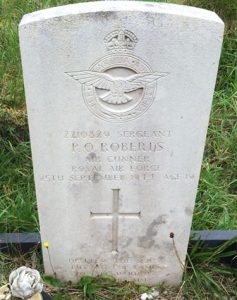
William Williams, Captain, Merchant Navy. William was the son of Pierce Samuel and Louisa Williams, of Porthmadog. He was a long serving mariner, and his wife, Margaret Williams, lived at Rhyd-ddu. William was the Captain of the Liverpool registered Motor Vessel Stentor. On 16 October 1942 Stentor left Lagos with Convoy SL-125, carrying a cargo of some 6,000 tons of produce and a number of Navy and Army personnel and nurses, bound for Liverpool via Freetown. During the night of 27 October 1942, the Convoy was sailing north-west of the Canaries when it was attacked by the German submarine U-509, which fires a spread of torpedoes at the Convoy, hitting Stentor and the SS Pacific Star. Stentor exploded and caught fire before sinking within eight minutes. Some 202 survivors were rescued by one of the convoy escorts, and were landed safely at Milford Haven, but William and 41 others lost their lives. William was 47-years-old when he was killed that day and is commemorated on the Tower Hill Memorial, London. He is not commemorated on the Beddgelert memorial.
